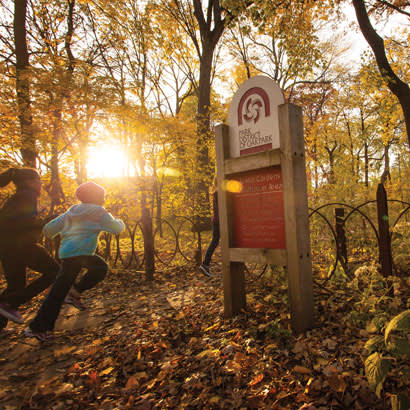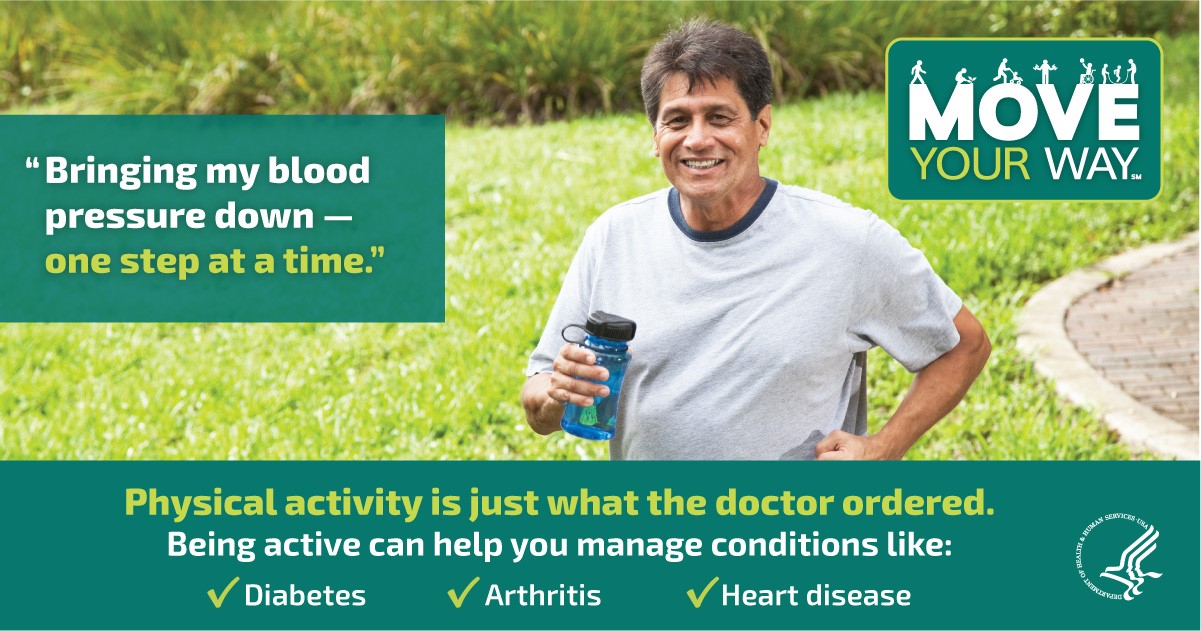
You’ve heard it before, but it bears repeating — physical activity is one of the most important things you can do to promote overall health and wellbeing. Just how important? New research shows that physical activity is associated with even more positive immediate- and long-term health outcomes than previously thought, and those positive outcomes exist for individuals of all ages, fitness levels and abilities. Moreover, evidence shows that regular physical activity can prevent and/or favorably influence management of seven of the 10 most common chronic conditions.
It is with that in mind that the U.S. Department of Health and Human Services (DHHS) has released the updated Physical Activity Guidelines for Americans, 2nd Edition. The purpose of these guidelines is to provide science-based guidance to help all people ages 3 years and older improve their immediate- and long-term health through regular physical activity. The guidelines outline the type and specific levels of recommended physical activity participation for children ages 3-5 years, children and adolescents ages 6-17, adults, older adults, women during pregnancy and the postpartum period, and adults with chronic health conditions and adults with disabilities. Guidance is also provided to promote safe physical activity and reduce risk of injury or other adverse events.
Building upon the first edition of the Physical Activity Guidelines for Americans from 2008, this updated version is based upon the latest scientific evidence and demonstrates the even more widespread health benefits of keeping active. The key updates of the new guidelines include:
- New research on the health benefits of physical activity related to brain health, additional cancer sites and fall-related injuries
- Immediate and longer-term benefits for how people feel, function and sleep
- Further benefits among older adults and people with one or more chronic conditions
- Risks of sedentary behavior and their relationship with physical activity
- Guidance for preschool children ages 3-5 years
- Tested strategies to get the population more active
The new guidelines also remove the stipulation that adults engage in physical activity in periods of at least 10 minutes, as new research indicates that bouts of moderate-to-vigorous physical activity in any duration of time can contribute to health benefits.
Promoting Physical Activity in Parks and Recreation
Physical activity or inactivity may seem like a personal choice, but opportunities for play and exercise are greatly impacted by community-level factors, including local parks and recreation. Local parks and recreation play a leading role in providing access to the safe places where individuals of all ages, backgrounds and abilities can engage in play and active recreation, including trail systems, inclusive and adaptive play spaces, community and senior centers, swimming pools and sports fields. Parks and recreation can also provide the tools and equipment for individuals to engage in structured exercise and physical activity, including for underserved and at-risk populations and people with differing abilities. For example:
- Through NRPA’s Healthy Aging in Parks Initiative, parks can offer arthritis-appropriate evidence-based interventions (AAEBIs) that allow individuals with arthritis and/or other chronic conditions engage in and enjoy the benefits of physical activity in a structured and safe environment.
- Through NRPA’s Parks for Inclusion Initiative, parks can offer play and exercise opportunities for individuals with physical and cognitive disabilities, as well provide the physical enhancements, policies, and resources to ensure that all members of the community feel welcome in parks and recreation regardless of gender, sexual orientation, race, ethnicity, religion or immigration status.
Recognizing the critical role that parks and recreation and other community sectors play in fostering a culture of health and promoting regular physical activity, the updated guidelines have identified the following five proven community-level strategies:
- Point-of-Decision Prompts: Promote a healthier community by posting signs or other prompts that encourage people to make healthy, active decisions, such as pointing people to walkable destinations like parks and encouraging people to use the stairs in recreational facilities. Learn more strategies for promoting active transportation through NRPA’s Safe Routes to Parks Campaign.
- School Policies and Practices: A variety of evidence-based strategies exist to encourage physical activity before, during, and after school, including providing programs, space, and equipment for physical activity during out-of-school time and incorporating behavioral skill building in physical activities. NRPA offers a variety of resources to support implementation of the evidence-based Healthy Eating and Physical Activity (HEPA) standards in out-of-school time settings through the Commit to Health initiative.
- Access to Indoor or Outdoor Facilities or Outlets: Parks and recreation can increase people’s access to indoor facilities, including community gyms, and outdoor facilities, including parks, trails, and other green spaces, as well as support effective community outreach strategies to promote utilization of these spaces. Browse examples of park improvements.
- Community-Wide Campaigns: Interventions that involve groups across the community working together to combine physical activity messaging with community activities focused on physical activity. Resources and sample promotional materials are available through DHHS, NRPA, and other national partners.
- Community Design: Built environment interventions can make it easier for people to be active, particularly for transportation, including well-lit and safe sidewalks and bike paths. In fact, research shows that having a park within a 10-minute walk increases physical activity levels and promotes positive health outcomes. Learn more through NRPA’s 10-Minute Walk Campaign.
Move Your Way Campaign
DHHS has launched a promotional campaign to support the release of the second edition of the Physical Activity Guidelines. A variety of tools and resources, including fact sheets, posters, social media graphics, videos and other tools are available here for free. Parents, caregivers, coaches, and park and recreation professionals can use the interactive Move Your Way activity planner to set weekly physical activity goals that combine a variety of physical activities. Here’s an example of a social media graphic that is available:

Physical Activity Guidelines for Americans, 2nd Edition
The complete Physical Activity Guidelines for Americans, 2nd Edition can be accessed here.
The executive summary Physical Activity Guidelines for Americans, 2nd Edition is available here.
As park and recreation professionals, you know that physical activity is not only vital to overall health, it is also the key to a fun and happy lifestyle. We encourage you to take a moment to review the updated guidelines and learn how you can help keep yourself, your friends and family, and your community active and healthy!
Cassie Pais is NRPA’s Development Officer for Health and Wellness.

